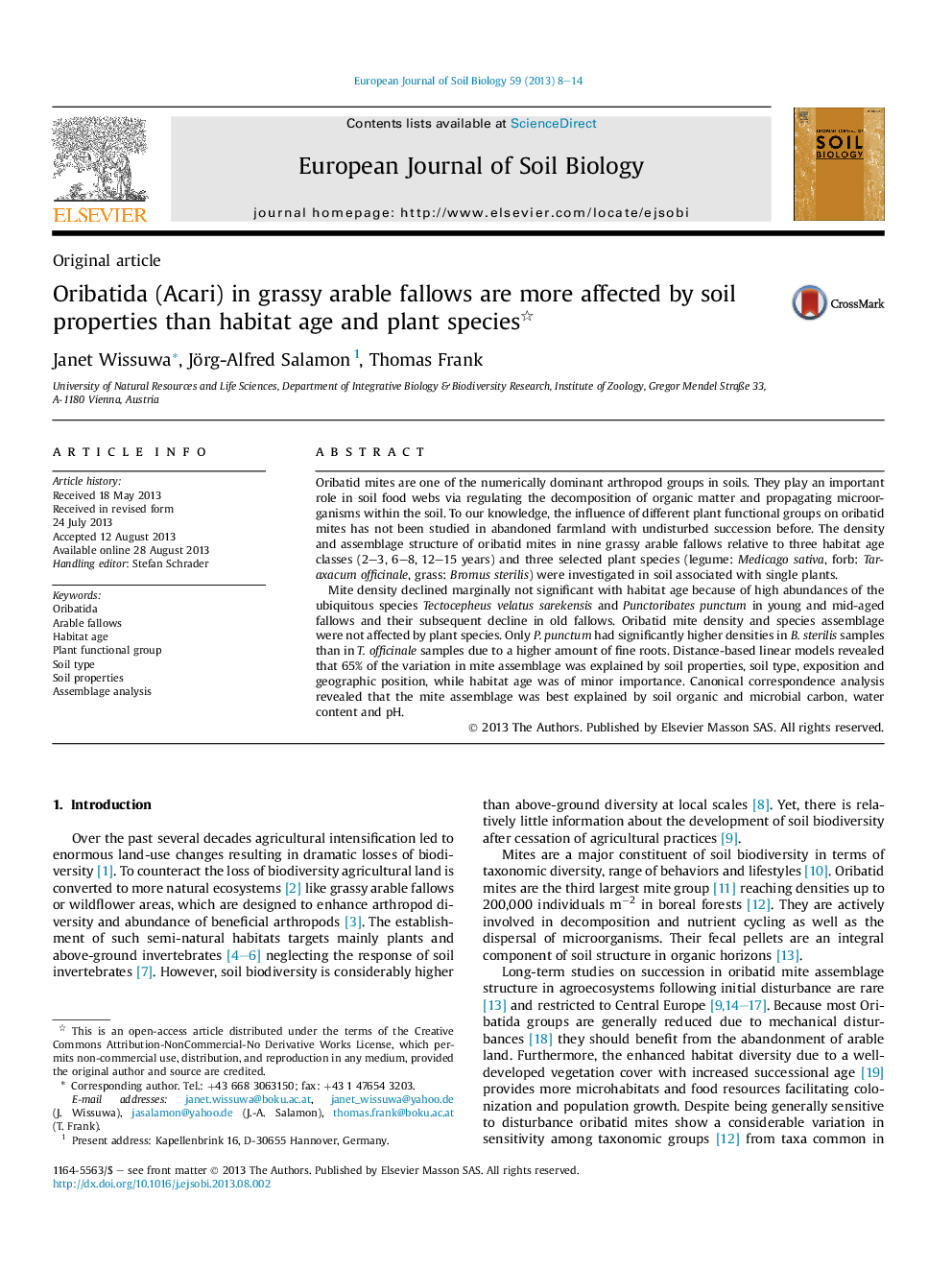| Article ID | Journal | Published Year | Pages | File Type |
|---|---|---|---|---|
| 6303032 | European Journal of Soil Biology | 2013 | 7 Pages |
Abstract
Mite density declined marginally not significant with habitat age because of high abundances of the ubiquitous species Tectocepheus velatus sarekensis and Punctoribates punctum in young and mid-aged fallows and their subsequent decline in old fallows. Oribatid mite density and species assemblage were not affected by plant species. Only P. punctum had significantly higher densities in B. sterilis samples than in T. officinale samples due to a higher amount of fine roots. Distance-based linear models revealed that 65% of the variation in mite assemblage was explained by soil properties, soil type, exposition and geographic position, while habitat age was of minor importance. Canonical correspondence analysis revealed that the mite assemblage was best explained by soil organic and microbial carbon, water content and pH.
Related Topics
Life Sciences
Agricultural and Biological Sciences
Soil Science
Authors
Janet Wissuwa, Jörg-Alfred Salamon, Thomas Frank,
